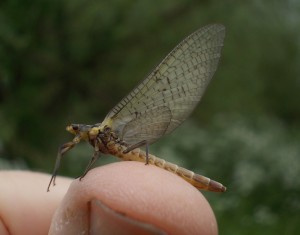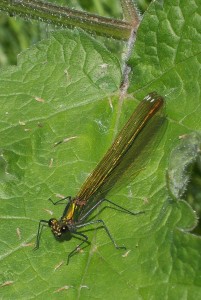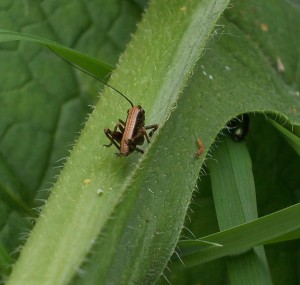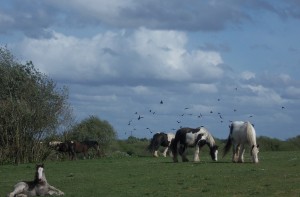
The sun is shining … in between the showers. Mayflies are resting all over the plants near the river. May blossom makes a bright show on every hawthorn bush. Yes, it’s May down at Wraysbury Lakes. The energetic breeze gives a cool feel, but out of the wind it’s very pleasant. Enjoying the brisk airflow are at least four Common Terns over the lakes and overhead; a few Swallows; and a small number of Swifts, newly arrived in the last few days, racing down to the water surface to catch flies — not the mayflies, which are active mainly at night. The warblers which are definitely about are hard to hear for the wind in the trees, but I caught snatches of Chiffchaff, Blackcap, many Whitethroats, plenty of Garden Warbler, a Willow Warbler, three Song Thrushes and a Blackbird, not to mention Robins and Wrens. A Cormorant lumbered past, climbing with effort, its jizz very much like that of the Boeing 747s lumbering heavily into the air.

There are some pale mayflies, with neither antennae nor the 3 tails: maybe these have broken off in the vegetation.

Also new today are quantities of damselflies: there are many brilliant iridescent blue male Banded Demoiselles, with their beautifully clear green-bronze females. This one seemed definitely to be watching me attentively. Two small blue species have also emerged, Blue-Tailed Damselfly and Common Blue Damselfly.
Over the lake, a long-winged falcon swooped at speed: I wondered for a moment if I had a Cuckoo, but the moustache and white face markings showed it was a Hobby, arrived from Africa in pursuit of the Swifts, and perhaps hunting damselflies as easier prey in this place. The low number of Swifts is worrying; they have been declining for years, as building renovation removes their old nest-holes, and increased human population pressure in Africa threatens them there too.

This small grasshopper, missing an antenna, is my first of the year.
Further along, the bare damp area that often has teasels is bright yellow with clumps of a yellow Brassica that has clasping leaves like wild turnip (or cultivated swede). There’s a definite cabbagey smell. A Whitethroat, caught out in the open, makes a dash for a bush.

